There are lots of reasons that people choose to come to Italy, but surely one of them is the country’s many great historical sites that allow you to experience its storied past. On that front, it’s hard to think of a better example than the famous ancient Roman ruins of Pompeii, which were buried in 79 CE when Mount Vesuvius erupted.
Many tourists go out of their way to add these ruins in the small town of Pompei to their Italy itinerary. If you’re thinking about visiting Pompeii, it’s extremely important that you take time to plan carefully to get the most out of the experience. A big part of that planning is making sure you get Pompeii tickets that work with how you want to visit. To that end, we’ve put together this guide on how to buy tickets to Pompeii to make things easier for you.
Quick Answer – How to Buy Tickets to Pompeii: Unless you like spending your vacation waiting in long lines, we highly recommended you either book your skip-the-line Pompeii tickets in advance here or book a guided tour of Pompeii. Out of these two, the guided tour is the better option as you get to learn about the history of this beautiful archeological site from an expert guide.
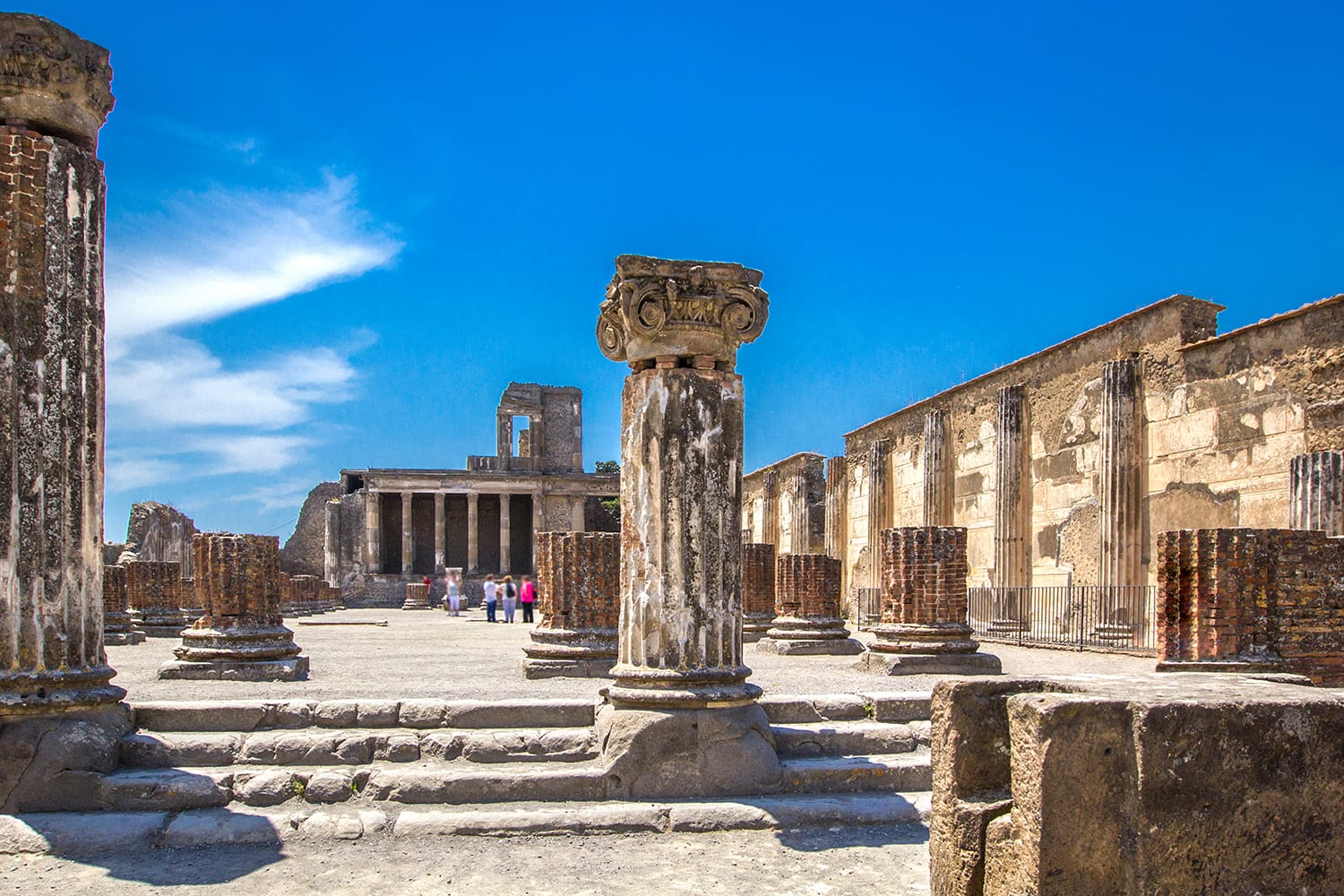
Best Ways to Get Tickets to Pompeii
With a fascinating and popular attraction like the ruins of Pompeii, it’s understandable that there are different ways to get tickets. The right approach depends on how organized you are and how you’d prefer to experience this remarkable place. Here we’ll take you through where to buy tickets for Pompeii for each approach so that you can find the right one for you and make the most of your visit.
1. Line Up in Person (Not Recommended)
When visiting famous or iconic tourist attractions, lining up for the ticket office when you arrive is usually the worst way to get tickets. That’s definitely the case here as waiting to buy tickets to Pompeii until you get there is sure to be a colossal waste of your precious vacation time.
Lines for tickets at Pompeii can get quite long, especially in summer, which is made worse by the sun beating down on you as you’re forced to wait outside the entrance. Ticket offices at the Pompeii Archeological Park can be found at each of the three entrances: Porta Marina Superiore, Porta Marina Inferiore/Piazza Esedra, and Piazza Anfiteatro.
2. Book Online
A better way to approach your visit is to book tickets to Pompeii online before you arrive. Tickets can be purchased through the official website of Pompeii Archeological Park, but this website does have a few flaws that make it far from ideal to use.
One big problem is that much of the information, including the names of the tickets, is in Italian, which makes navigating the site a challenge. There’s also no information as to whether you can change or cancel these tickets for a refund, which could become a problem if your plans change. But the biggest problem with getting tickets through the official website is that they’re not skip-the-line tickets for Pompeii.
It’s for all those reasons that we recommend booking your ticket to Pompeii through this link or, if you’d also like an audio guide, through this link. With these easy-to-book tickets, you get to use the priority access line at your designated entrance and can cancel your ticket up to 24 hours in advance and receive a full refund. Of course, these tickets cost a little more than the standard tickets, but we think they’re well worth it.
3. Book a Guided Tour (Recommended)
Despite the ruins of Pompeii being a world-class attraction, you won’t find an abundance of information available to you as you explore the site. It’s for this reason that we highly recommend taking a guided tour of Pompeii if you really want to learn more about its fascinating history. Another benefit of having a professional guide take you about is that the ruins of Pompeii are quite expansive and it’s useful having someone help you navigate the site. While you can arrange guided tours through the guide stations at the entrances, these tours won’t enable you to skip the line, which is one final perk of going with this tour.
4. Book a Day Trip
Most tourists don’t stay near the ruins of Pompeii when they visit but rather come from one of the more established towns or cities in this part of Italy. Many chose to make the trip to Pompei independently by car or train, but there is one other alternative – a day tour.
By booking a day tour, you don’t have to worry about transport or your schedule, as that’s all taken care of for you. The most common day tours are from Naples through this link or from Rome through this link. What’s great about these day trips is that they fill out the day by also taking you up Mount Vesuvius to see the awesome views from the top of the volcano.
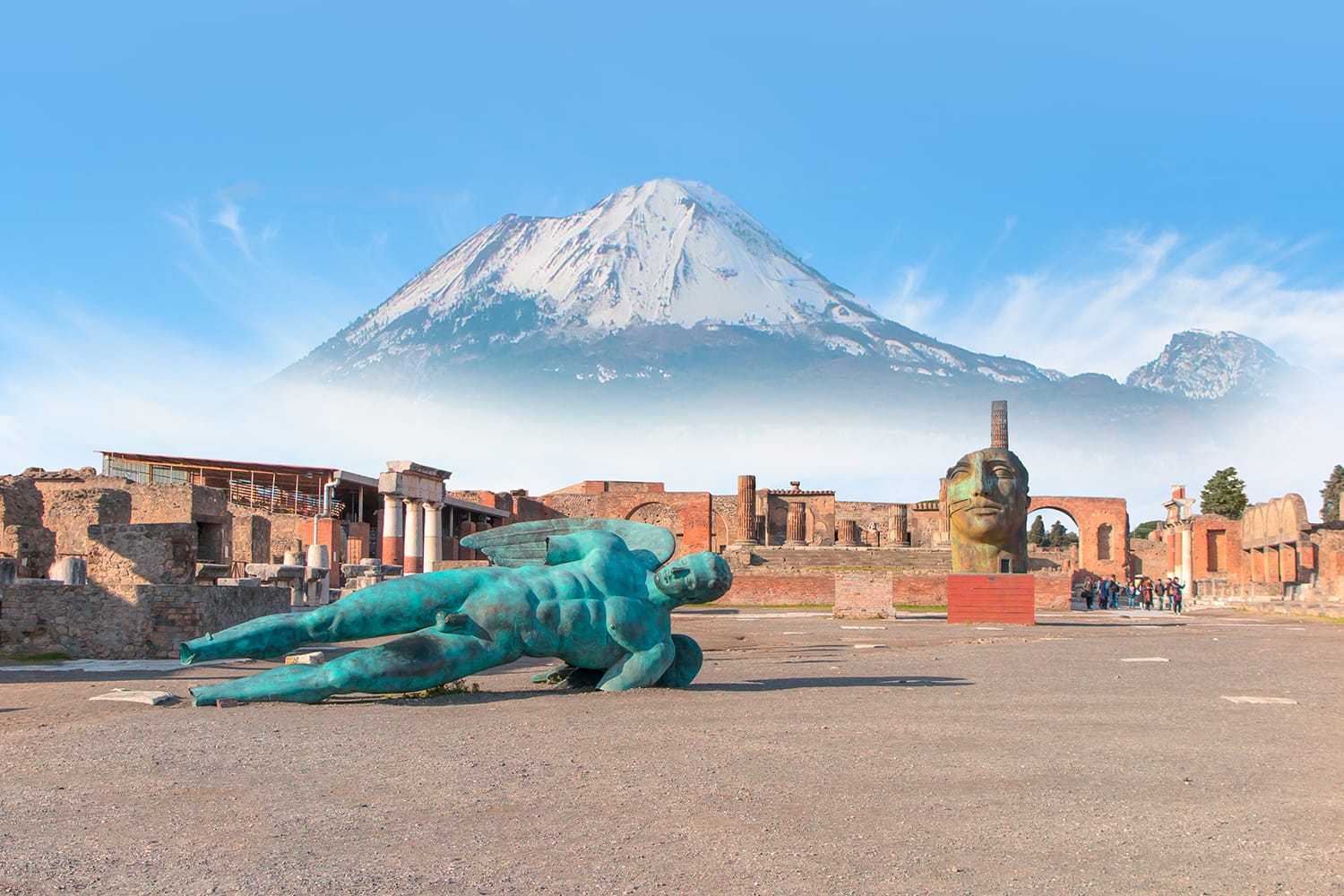
Useful Information for Visiting Pompeii
What’s the Best Time to Visit Pompeii?
An important thing to consider when touring Pompeii is the timing of your visit. After all, this historical site is one of the most popular tourist attractions in Italy and can get exceptionally busy at certain times of the year.
It’s best to avoid visiting during the summer months of June through September; this is not only the busiest time of year but also the hottest, and you’re bound to feel the heat if you spend all day at the site.
Instead, it is better to schedule your visit for either side of summer in the months of March, April, and October. During these months, you should find tourist numbers much more manageable, while the weather should be reasonably comfortable for outdoor sightseeing.
As for when during the day you should come, it’s best to get to the ruins first thing in the morning. You’re bound to spend hours at the site and the Archeological Park gets busier in the late morning as tour groups and people on day trips arrive.
Pompeii Hours of Operation
The ruins of Pompeii are open every day of the week, but are closed January 1, May 1, and December 25. Most of the satellite ruins around Pompeii such as the Boscoreale and Oplontis sites are closed on Tuesdays, while the Castello di Lettere ruins are open on Friday, Saturday, and Sunday.
Between November 1 and March 31, the ruins are open from 9:00 to 17:00, with last admission at 15:30. The other ruins are also open from 9:00 to 17:00 but close at 16:00, except for Castello di Lettere, which is open from 9:30 to 13:30 and 14:30 to 17:00.
Between April 1 and October 31, the ruins are open from 9:00 to 19:00, with last admission at 17:30. The other ruins are also open from 9:00 to 19:00 but close at either 17:30 or 18:30, except for Castello di Lettere, which is open from 9:30 to 13:30 and 14:30 to 19:30.
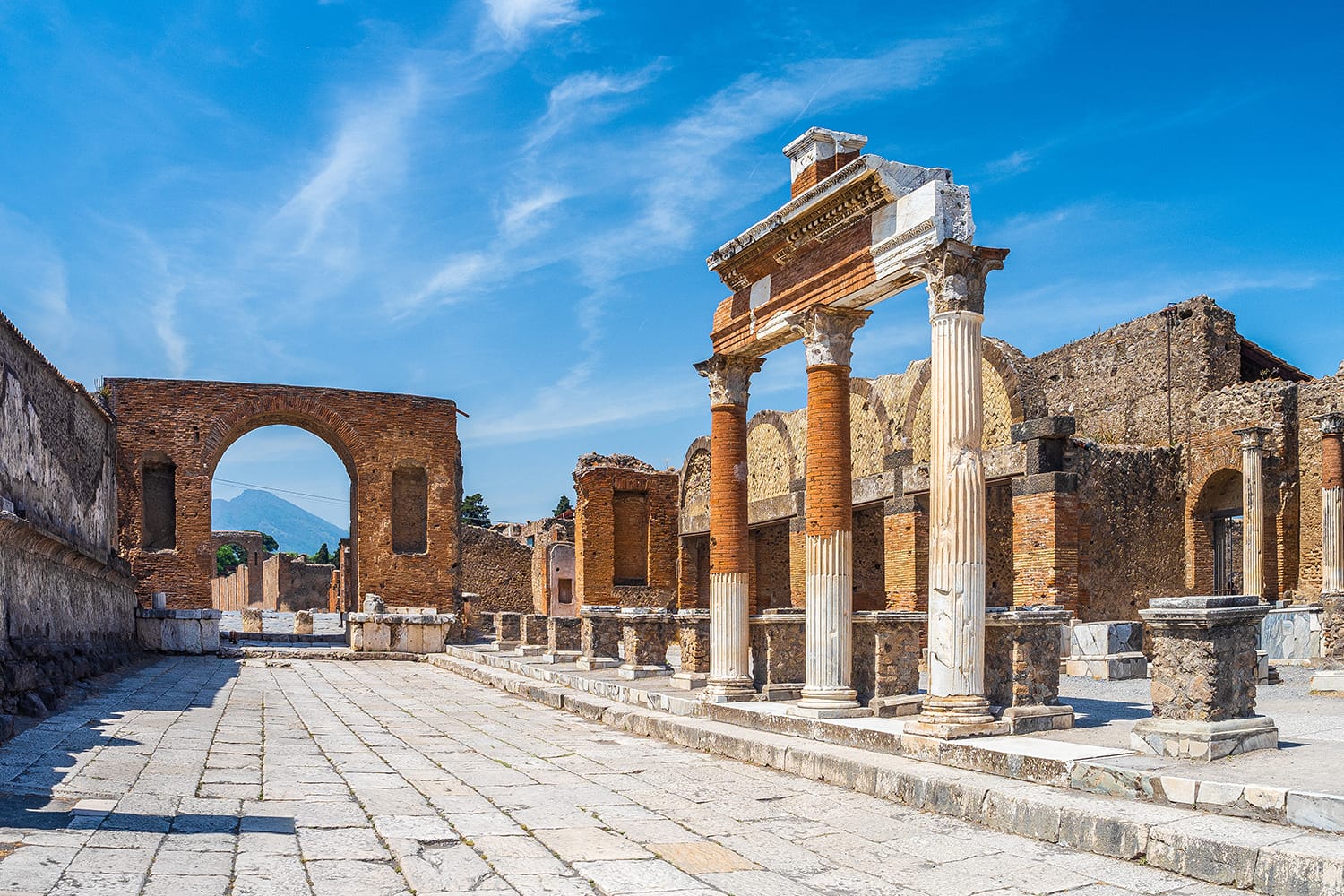
How to Get to Pompeii
Whether coming from Naples or Sorrento, travelers will find that getting to Pompeii is relatively straightforward. Driving to the ruins is definitely the easiest way to get there, but you also have the option of taking public transport if that better fits into your plans.
The closest train station to the main entrances of the site is Pompei Scavi Villa dei Misteri which is located along the route between Naples and Sorrento. By train you can use the L1 service, which takes 45 minutes from Naples and 35 minutes from Sorrento. There’s also the 5000 SITA bus service from Naples that takes 30 minutes to reach the Pompei Scavi Villa dei Misteri station.
How Do Pompeii Tickets Work?
Some major tourist attractions have complicated approaches to their tickets – but not the ruins of Pompeii. Since the tickets to Pompeii are relatively straightforward, planning your visit is made a little easier.
To visit the main ruins at the Pompeii Archeological Park, there is just one type of ticket, which is for general admission. However, in the surrounding area around the park are various other small ruins that travelers can visit, like the Boscoreale, Oplontis, and Castello di Lettere sites. Each of these smaller ruins have their own individual ticket to visit. Fortunately, the general admission ticket to Pompeii also includes entrance to the Villa Regina ruin at Boscoreale.
When purchasing your tickets through the official website, you’ll need to decide which entrance you want to use for your visit, with Porta Marina Superiore being the most common entrance. Pompeii tickets don’t have scheduled entrance times, meaning you don’t need to select a specific time of day to arrive.
On the day, you can present your tickets at the selected entrance either in the form of a digital copy on your smartphone or printed out; this includes any free tickets you may have booked as well.
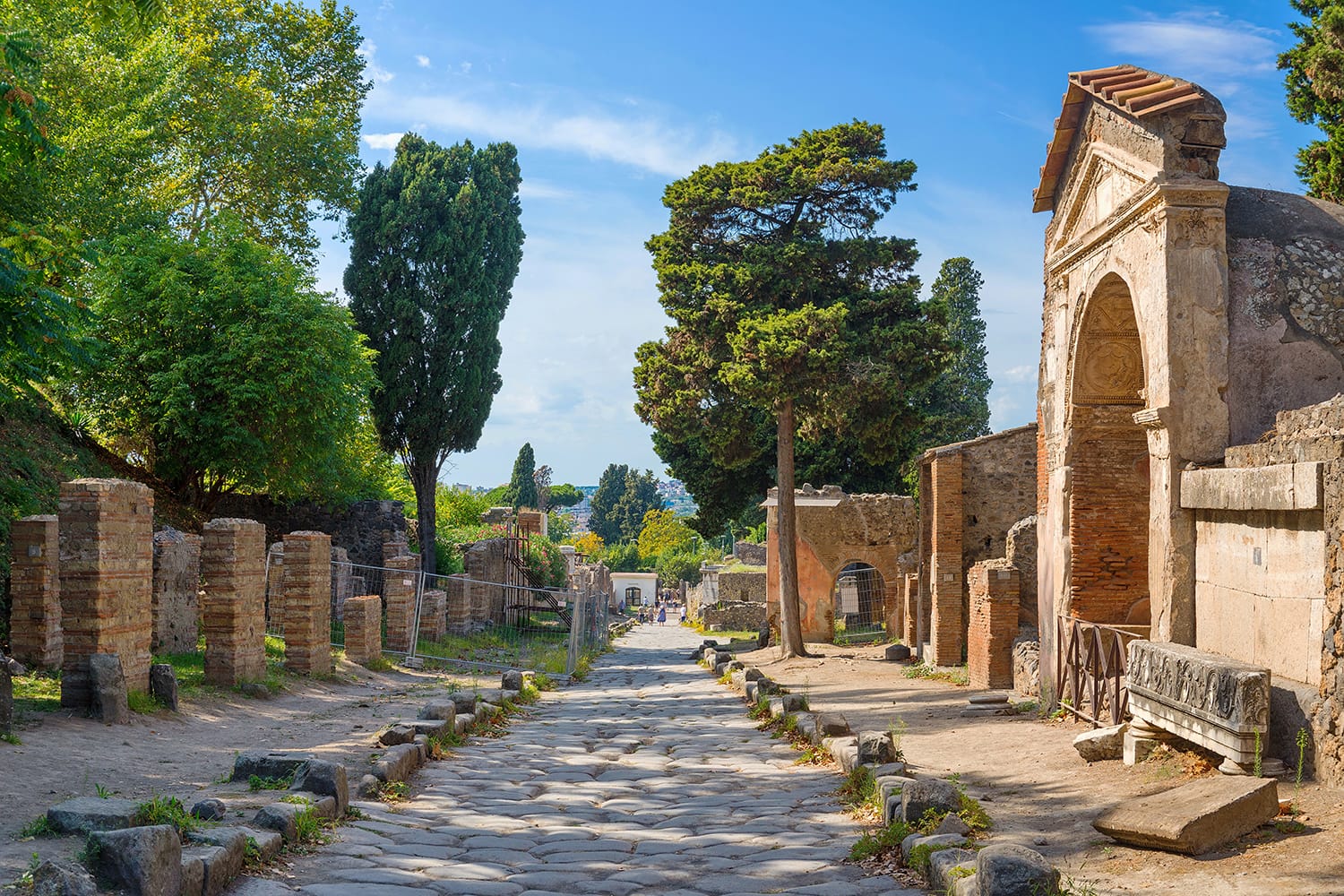
How Much Do Tickets for Pompeii Cost?
Now that you understand how Pompeii tickets work, let’s look at the cost for the different tickets. Because there are different ways to get your tickets, prices vary, but we’ll cover the standard ticket prices for Pompeii when bought through the official website.
A general admission ticket to Pompeii costs €16 for adults. As for the other historic ruins around Pompeii, they each have the following individual entry fees, as well as an added €1.50 online advance sale fee (except for Castello di Lettere):
- Boscoreale: €2
- Oplontis: €5
- The Archeological Museum: €6
- Castello di Lettere: €2
- Stabiae: Free entry
EU citizens between the ages of 18 and 25 are eligible for reduced priced tickets that cost €2 for general admission to Pompeii and all the other sites, plus the added €1.50 online advance sale fee.
Children under the age of 18, as well as visitors with disabilities, are granted free admission to the site. Each first Sunday of the month, entry to the ruins of Pompeii is free, but you’ll still need to book your free ticket through the website and ticket numbers are limited.
Best Hotels near Pompeii
Although it’s not the most common approach to visiting, you may decide that you’d like to stay near the ruins of Pompeii. Visitors normally stay in Naples or the coastal town of Sorrento and make the quick journey over, but there are accommodation options in the town of Pompei if that’s what you’d prefer. Here are a few of our recommendations for local places to stay.
One of the finest options for accommodation around Pompei is the Resort & Winery Bosco De Medici. This four-star resort is located 700 meters (2,300 feet) from the ruins of Pompeii and boasts a wealth of high-end amenities, including a large outdoor pool, horse riding stables, and its own vineyard.
For a comfortable and relaxing place to stay that’s also great value, be sure to look at the Nolana ’86 bed and breakfast. This B&B comes with fresh, contemporary rooms, an excellent complimentary breakfast, and even a shared kitchen should you want to cook during your stay.
Pompei is surprisingly good if you’re seeking proper budget accommodation, with Agorà Hostel one of its most popular offerings. In this simple yet inviting hostel, you’ll enjoy helpful hosts, air-conditioned dorms and private rooms, and a five-minute walk to the archeological park entrance.
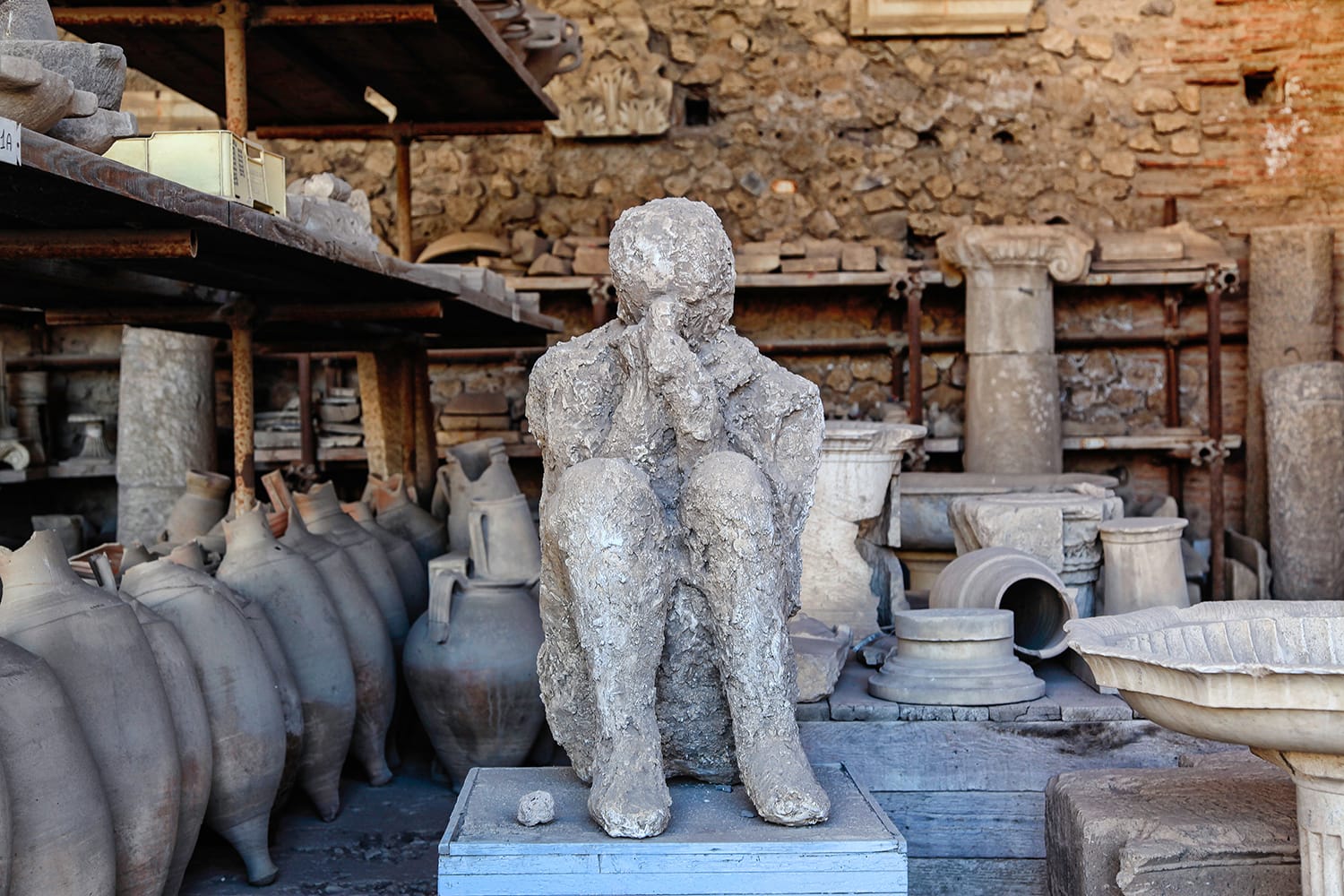
Security Process at Pompeii
To ensure you have a stress-free experience at the Pompeii Archeological Park, you’ll want to know what you are and aren’t allowed to bring in with you. The good news is that there’s a free cloakroom service at the site, so you can store smaller items if you can’t bring them in.
Visitors to the ruins of Pompeii aren’t allowed to bring large backpacks or luggage into the archeological park. Professional photography equipment and drones are also not allowed without formal authorization.
Visiting Pompeii With a Disability
Pompeii Archeological Park has a variety of measures to improve the accessibility of the site for visitors with disabilities.
The centerpiece of this initiative is the Pompeii for All route, which starts from Piazza Anfiteatro and provides a dedicated itinerary designed for visitors with mobility concerns so that they can comfortably visit the park’s most significant points. The site has also trialed a special system for visitors with visual impairments, using an electronic bracelet to signal for the wearer.
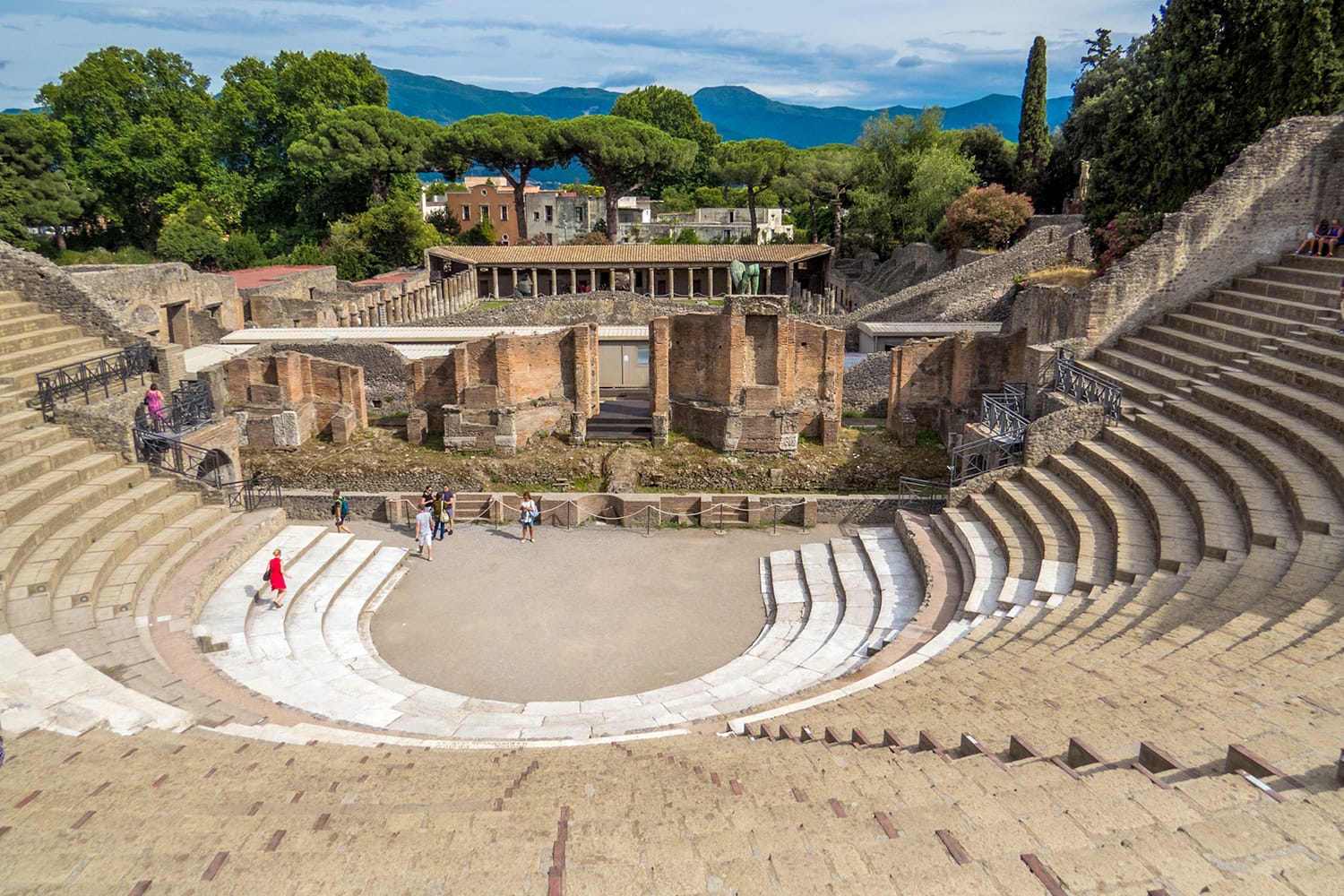
FAQ – Facts About Pompeii
What Is Pompeii?
Pompeii is a preserved ruin of an ancient Roman city and a UNESCO World Heritage Site.
What Happened to Pompeii?
In 79 CE, the city was buried in volcanic ash and debris when Mount Vesuvius erupted.
When Was Pompeii Built?
The ancient town of Pompeii was likely first built in roughly the 7th or 8th century BCE.
How Old Is Pompeii?
The ruins of Pompeii are almost 2,000 years old and provide a unique glimpse into life back then thanks to their excellent preservation under layers of volcanic ash.
Who Built Pompeii?
Pompeii was first settled by a local Oscan tribe before being developed by the ancient Greeks, Etruscans, and Romans.
Where Is Pompeii Located?
The Archeological Park of Pompeii is located southeast of Mount Vesuvius and the city of Naples in the Campania region of Italy.
That should be all the information you need to know for your visit to Pompeii, including why skip-the-line Pompeii tickets are such a good idea. Once you’re all booked, there’s nothing more to do than head off on your trip and enjoy this fascinating historical attraction for yourself.


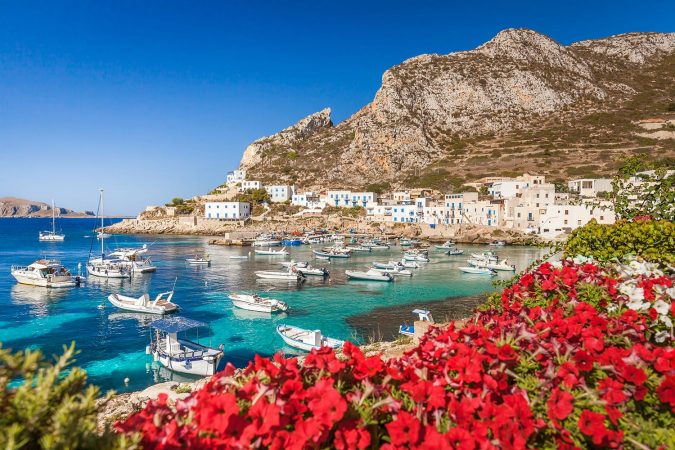

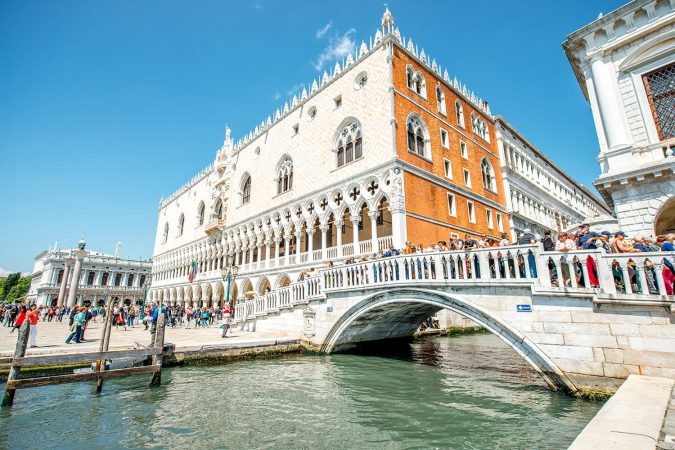



Rachel
Because of our schedule, we have to visit Pompeii on Sunday June 4th. I have tried several times to book tickets (for 8) online but none of them let me since entry is free that day. Your article says we still need to reserve. Do you have any links that allow this? I would settle for entry and an English audio guide for each of us. I would like to buy the combo ticket for Pompeii and Herculaneum.
Ben
Free tickets can only be booked through the official website and not GetYourGuide.
Diva
Are they still requiring proof of vaccination for entry?
Ben
Proof of vaccination is no longer required.
Kellie
When you say “Children under the age of 18 … are free” does this include if the person is 18?